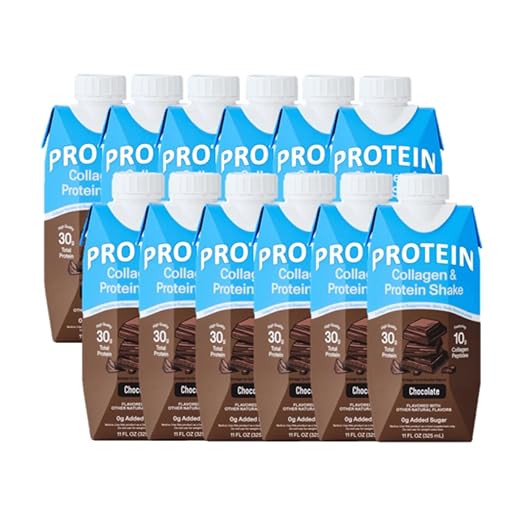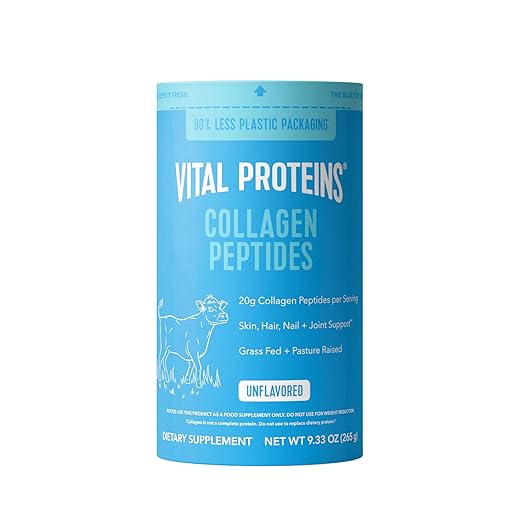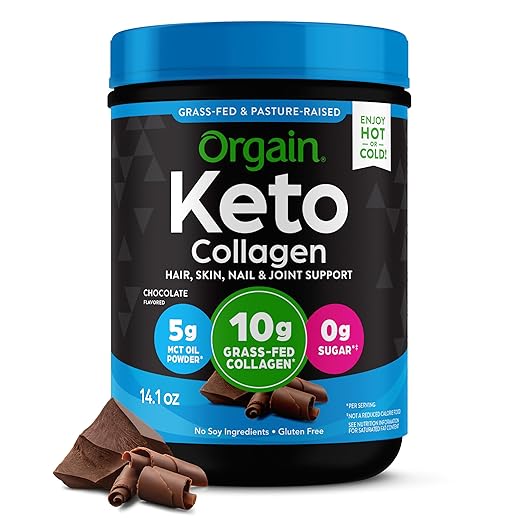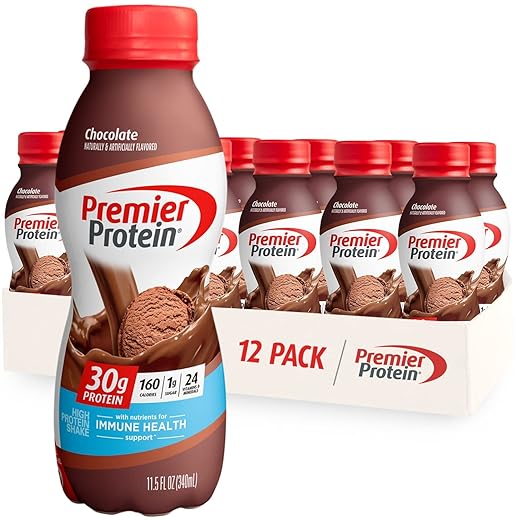Collagen Shakes Ranked: Quick guide to protein shakes with collagen for joint support
Thinking about adding a collagen protein shake to your routine? Collagen shakes combine hydrolyzed collagen with other proteins to support joint health, recovery, and skin—many people use them for stiffness or everyday wear‑and‑tear.
This guide tests and compares popular collagen shakes on FOUR practical axes: protein, sugar, taste, and value so you can pick a winner fast. Expect clear nutritional facts, honest taste notes, and a concise buying guide that helps you match a shake to your goals without wading through confusing labels. Read on for help.




How we tested and what mattered most
What we measured (objective)
We scored every shake using clear, repeatable nutrition math so you can compare products at a glance. Key objective metrics:
A quick rule you can use: a protein-to-calorie ratio above 0.2 is solid for a meal-replacement shake; lower ratios are better for dessert-style shakes.
What we assessed (subjective)
Real-world palatability matters when you actually drink these every day. Our testers evaluated:
We tasted products straight from a shaker and in two real scenarios: morning post-workout and an afternoon pick-me-up — because performance varies with temperature and added ingredients.
Data sources and how we scored
We pulled figures from nutrition labels, manufacturer sites, and aggregated verified user reviews. Where labels conflicted with websites, we used the label or contacted manufacturers for clarification.
Scoring weights (how final ranks were calculated):
Exclusions & limitations
We excluded bone-broth-only products, gummy supplements, and items sold only as culinary collagen. Limitations: labels can change, formulation varies by flavor/batch, and personal taste is subjective — we account for that by averaging multiple testers’ impressions.
Next up: a fast, at-a-glance summary of our top picks so you can find the best shake based on your needs.
Top picks at a glance: best-in-class choices by need
A quick, scannable shortlist so you can pick the shake that matches your goals — protein, collagen dose, sugar, taste and cost-per-serve are all considered.
Best for protein — Whey + Collagen Performance Blend
High-performance pick: ~24 g protein and a solid ~10 g collagen per serving, just 2 g sugar, smooth chocolate taste and mid-range price (~$1.80/serving). Ideal for athletes or lifters who want dense protein plus joint-friendly collagen after workouts.
Best low-sugar — Collagen Isolate Zero-Sugar
Clean label champion: about 15 g protein, ~12 g collagen, 0 g added sugar and a neutral flavor that mixes easily—price sits around $1.90/serving. Perfect for keto dieters, people tracking glucose, or anyone who hates sweetness.
Best tasting — Chocolate Keto Collagen Powder with MCT Oil
Dessert without remorse: rich chocolate flavor, creamy mouthfeel, ~18–20 g protein, ~8–10 g collagen, low sugar and a slight MCT oil creaminess that masks collagen grittiness. Great for flavor-first drinkers who want a satisfying daily shake.
Best value — Everyday Value Collagen Blend
Budget winner: modest 12 g protein and ~8 g collagen, ~3 g sugar, surprisingly pleasant vanilla flavor and a wallet-friendly ~$0.70/serving when bought in bulk. Suits shoppers who want daily collagen without breaking the bank.
Best for joint support — Multi-Collagen Joint Support Formula
Therapeutic-leaning option: focused on higher collagen dose (10+ g, multi-type peptides), ~18 g protein, low sugar (≈2 g) and a neutral taste; price around $1.50/serving. Good for older adults or anyone prioritizing collagen dose over flashy flavors.
Best meal-replacement — Complete Collagen Meal Shake
All-in-one meal swap: ~25 g protein, ~8 g collagen, higher calories and around 8–10 g sugar for palatability, very creamy texture and ~$2.30/serving. Best for busy commuters or those replacing breakfast/lunch.
Next up: we’ll unpack what those protein and collagen numbers really mean for joint health and how to read labels so you’re buying the right formula for your goals.
Protein and collagen explained: what labels really mean for joints
Collagen vs “regular” proteins — the short version
Collagen isn’t a complete protein the way whey or soy are. It’s especially rich in glycine, proline and hydroxyproline — amino acids tied to connective tissue structure — but low in tryptophan and a few other essential AA. Whey and most complete plant blends provide the full amino acid profile needed for muscle repair. Think of collagen as targeted structural support for tendons, cartilage and skin rather than a sole muscle-building protein.
Hydrolyzed collagen vs gelatin
Hydrolyzed collagen (a.k.a. collagen peptides) is broken into short chains, dissolves easily in cold drinks and is what you want in a shake. Gelatin gels when heated and isn’t practical for most beverages.Quick rule: if you want a smooth post-workout drink, choose hydrolyzed collagen.
Typical serving sizes and what evidence uses
Clinical studies and supplement labels vary, but common ranges:
Practical advice: aim for 5–10 g collagen daily for general joint support; consider up to 15 g only if recommended by a clinician.
How to read protein-to-collagen ratios
If a product lists “24 g protein / 10 g collagen,” collagen is usually part of that 24 g (it’s a protein source). But some brands list collagen separately while still including it in total protein — check the Nutrition Facts panel and ingredient order to confirm. If total protein looks low but collagen grams are high, realize collagen won’t replace a complete protein when you need muscle-building amino acids.
Quick tips for boosting overall protein
Next up: we’ll look at sweeteners and sugar — how to keep it tasty without the glycemic spike.
Sugar and sweeteners: keep it low without losing flavor
Types you’ll see on labels
Labels use many names for “sweet.” Common ones:
Why sugar matters
Sugar isn’t just about calories. A few teaspoons extra per serving can:
Spotting hidden sugars
Check three places: Nutrition Facts (added sugars line), ingredients (look for syrups, fruits, molasses), and “flavored” labels. If flavorings or sweetener blends are high on the ingredient list, expect a sweet product.
How to cut sugar without killing taste
Tolerance for artificial sweeteners
Artificials cut calories but change taste perception (plain foods may seem flat) and some people report metallic or bitter aftertastes. Sugar alcohols can cause bloating in sensitive folks. My tip: buy small tubs or single-serve packets to test your tolerance before committing to a big jar.
Next up: we’ll put those low-sugar mixes through real-life taste and mixability tests.
Taste, texture and mixability: real-world palatability hacks
Our tasting protocol
We sampled each shake blind with three testers (athlete, office worker, and picky snacker) to average real-life preferences. Each sample was scored 1–10 for initial flavor, aftertaste, mouthfeel (grainy vs silky), and aroma. Tests used the same scoop per label, mixed in 8 oz water, 8 oz skim milk, and a scoop in 10 oz hot coffee to compare dissolution and flavor lift.
Flavor intensity & common profiles
Chocolate mixes often scored highest for immediate pleasure; unflavored won for flexibility.
Texture, graininess and dissolve behavior
Cold water: fastest, but highlights graininess and chalk.
Milk (dairy/plant): smooths texture, amplifies sweetness and creaminess.
Hot coffee: dissolves faster and reduces clumps; beware heat-sensitive additives (some may bloom or separate).
A real-world note: a coworker’s morning coffee mix cut chalkiness instantly—hot liquids help.
Mixing hacks that actually work
Rescue a weak or gritty shake
Allergen & vegan notes
Collagen is animal-derived—vegetarians/vegans should opt for “collagen builders” (not true collagen). Watch for dairy, soy, nuts, and gluten on labels before buying.
Price, value and cost-per-serving: making cents of collagen shakes
How to compare prices (quick math)
Start with three simple calculations so you compare apples to apples:
Example: a 30‑serving tub at $30 with 20 g protein and 10 g collagen per scoop = $1/serving → $0.05/g protein and $0.10/g collagen.
Form factor matters
Promotions, subs & real savings
Subscriptions often knock 10–20% off. Look for first‑time discounts, bulk packs (2+ tubs), and cashback/warehouse deals. But always recalc price-per-gram — a flashy sale on a low‑density product can still be worse value than a full‑price, high‑density option.
When higher price can be better value
Pay more when the product gives more: higher protein/collagen per serving, fewer fillers/sugars, third‑party testing, or clinically dosed collagen blends. An expensive RTD might be worth it for a travel week, but for daily joint support, density beats convenience.
Budget stretches that keep joint benefits
Shipping & storage notes
Powders are lightweight and shelf‑stable; RTDs add shipping weight and sometimes need chilled handling (or fragile packaging). Factor shipping fees and expiration dates into per‑serving math.
Next up: a concise buying guide to help you choose the right collagen shake for your goals.
Quick buying guide: choose the right collagen shake for your goals
Prioritize collagen dose for joint support (aim for 5 to 10 g/day), check total protein per serving if you want a meal-replacement, and keep added sugars low — under 5 g when possible. Taste-test small sizes or sample packs before committing, and favor powders that mix smoothly. Compare price per gram of collagen and cost per serving to find value.
Checklist: collagen dose, protein per serving, added sugars, taste/mixability, and price per serving. Try one small change: swap a snack for a collagen shake or add a scoop to your smoothie. Consult a healthcare pro for joint-health advice today.












